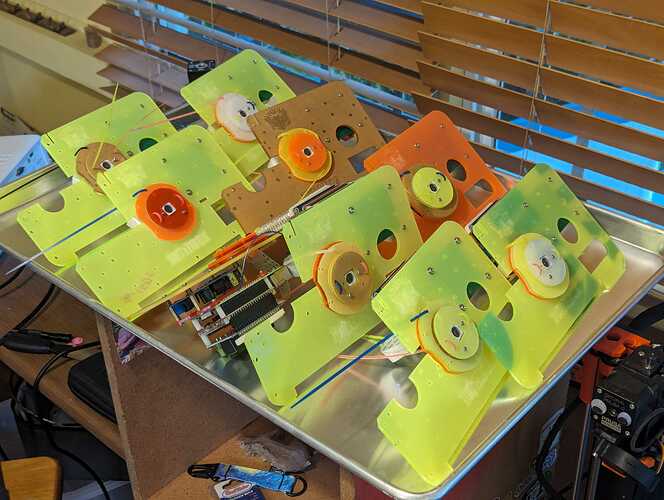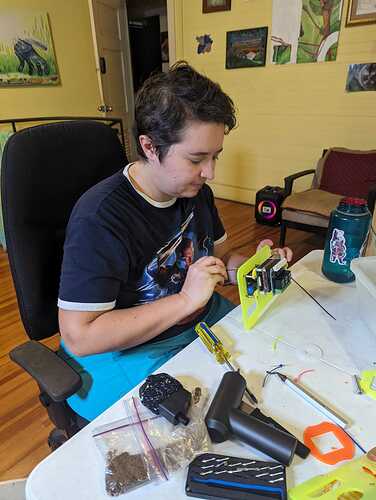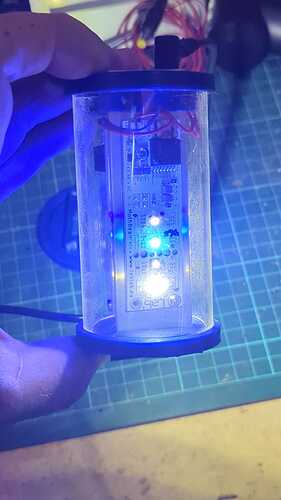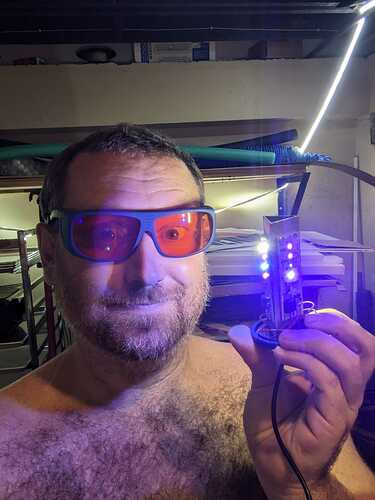Prepping for Deployment
It’s been mega busy at dinalab here in panama as me, Kitty, and @Hubertszcz prepped for his big field deployment in western panama.
We finalized our designs, dealt with infinite last minute part delays, and built 11 of them. We are working on finishing up our documentation of the full build process that we documented thoroughly the whole time.
and now Hubert is busy working with his team and setting up all their assays.
Hubert and Yash are also finalizing some scripts to be able to easily customize when the Mothbox is scheduled to go on with a friendlier UI.
Mothbeam
Back in November, Moritz Buttlar @moritz_lablab saw our posts about the Mothbox and wanted to help. He’s an LED designer, and i told him figuring out a way to make a multi-spectral, low cost but powerful and resilient, moth-attracting light could be an amazing thing for us and moth scientists! He pointed out one reason for the Lepiled’s high price (~650 euros) is aside from its really nice build quality, it uses 4 high powered LEDs which are a bit expensive individually. He quickly made a new design that replaces each of those high powered LEDs with 4 smaller, slightly lower powered LEDs. We just got them here in Panama, and I helped test an early version of his build documentation that will be up online shortly!
Putting it together was a breeze, just 6 quick wires.
It’s really super duper amazingly bright. I used safety goggles to be anywhere near it, especially while working this close.
He also designed his PCBs for multiple power options. You can make an extra low-cost mothbeam by cutting the PCBs in half and just using 2 LEDs per side. I also just hooked up our big Mothbox 12V batteries to the mothbeam to power it, but actually this is UNDERPOWERING the thing!
as Moritz told me
- 12V is only good for the PCBs with 2 LEDs. Otherwise, I think 15 V is the minimum, so it will be even brighter if you increase the voltage to 15V.
I measured 0.046A @ 12 V = 0.55 W and 0.336 A @ 15V = 5.04 W and 0.254 A @ 20V = 5.08 W
As you can see, if the input voltage is sufficiently high, the buck converter works and provides a constant current to the LEDs. Therefore, the power is always nearly the same.
This is the advantage of this system because the output is independent of the exact battery voltage and also it is always efficient.
In terms of finding convenient ways of powering the thing, Moritz also came across the fact there is a niche of people using their power tool batteries to mod out their Children’s PowerWheel toy cars! and so you can find cheap adapters to get a hefty 18V power supply from Makita, Dewalt, or Ryobi batteries easily.
Moritz is also happy to talk to other people who want to order some Mothbeam PCBs and try them out!
And we will have all the open source documentation up shortly!






